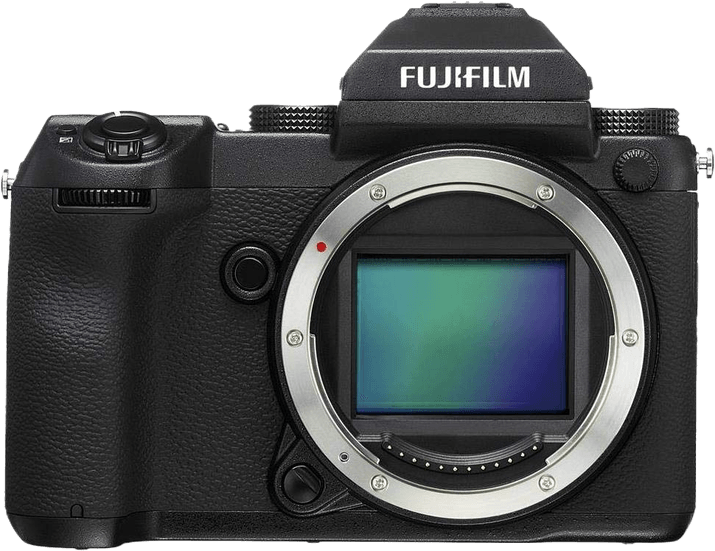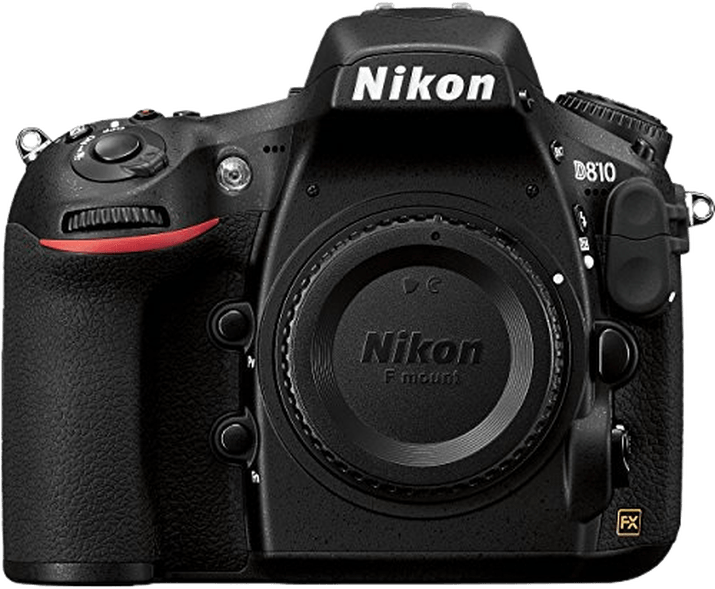Fujifilm GFX 50S vs Nikon D810 Comparison
Fujifilm GFX 50S

Nikon D810

The Fujifilm GFX 50S outperforms the Nikon D810 with a score of 78/100 compared to 72/100. Both cameras share similarities, such as being released a few years ago, with the GFX 50S in 2016 and the D810 in 2014. They also have comparable sizes, with the GFX 50S measuring 148x94x91mm and the D810 at 146x123x82mm.
The Fujifilm GFX 50S excels with its mirrorless camera type and lighter weight of 920g, making it more portable for photographers. On the other hand, the Nikon D810, a DSLR camera, has a lower launch price of $3300, making it a more affordable option, but it weighs slightly more at 980g.
Taking all factors into account, the Fujifilm GFX 50S proves to be a better camera with its higher score, mirrorless technology, and lighter weight. However, the Nikon D810 remains a viable choice for those seeking a more budget-friendly option without compromising too much on quality.
Fujifilm GFX 50S vs Nikon D810 Overview and Optics
The Fujifilm GFX 50S narrowly outperforms the Nikon D810 in optics, with a score of 77/100 compared to the Nikon’s 76/100. Both cameras share some common specifications, such as having a CMOS sensor, but there are key differences that set them apart.
The Fujifilm GFX 50S boasts 51 megapixels, which is significantly higher than the Nikon D810’s 36.3 megapixels. This allows the Fujifilm camera to capture more detail in images, resulting in higher quality photos. Furthermore, the GFX 50S has a medium format sensor, which is larger than the D810’s full-frame sensor. This larger sensor size contributes to better image quality, particularly in low light conditions. Additionally, the Fujifilm GFX 50S features image stabilisation, which the Nikon D810 lacks. This helps to reduce camera shake and produce sharper images in various shooting conditions.
On the other hand, the Nikon D810 has a faster shooting speed of 5 frames per second, compared to the Fujifilm GFX 50S’s 3 frames per second. This makes the D810 more suitable for capturing fast-moving subjects, such as sports or wildlife photography. The Nikon camera also has a higher DXOMARK score for its sensor at 97, but it is important to note that DXOMARK does not score Fujifilm cameras, so a direct comparison is not possible.
To conclude, the Fujifilm GFX 50S is the winner in optics due to its higher megapixel count, larger sensor size, and image stabilisation. However, the Nikon D810 has advantages in shooting speed and a high DXOMARK score for its sensor. Ultimately, the choice between these cameras depends on individual preferences and specific photography needs.
Fujifilm GFX 50S vs Nikon D810 Video Performance
When it comes to video capabilities, the Fujifilm GFX 50S does not have any video functionality. This means that if video recording is an essential feature for you, the GFX 50S may not be the right choice. On the other hand, the Nikon D810 has a video score of 70/100, making it a suitable option for those who require video recording capabilities in their camera.
The Nikon D810 offers Full HD video recording with a maximum resolution of 1920 x 1080. This ensures that your videos will have a high level of detail and clarity. The camera also supports a maximum video frame rate of 60fps, which allows for smooth motion in your videos, particularly when capturing fast-moving subjects or scenes.
In addition to its basic video recording features, the Nikon D810 also includes built-in time-lapse functionality. This feature enables you to create stunning time-lapse videos by automatically capturing images at set intervals and combining them into a single video file. This can be a valuable tool for capturing the passage of time or the movement of subjects over an extended period.
Taking all of these factors into consideration, it is clear that the Nikon D810 is the better choice for those who require video capabilities in their camera. While the Fujifilm GFX 50S may excel in other areas, its lack of video functionality makes it unsuitable for users who need to record videos. Therefore, the Nikon D810 stands out as the more versatile option in this comparison.
Fujifilm GFX 50S vs Nikon D810 Features and Benefits
The Fujifilm GFX 50S outperforms the Nikon D810 in features with a score of 87/100, compared to the Nikon D810’s score of 59/100. Both cameras share the same screen size of 3.2 inches and lack a flip screen and GPS. Additionally, both models offer WiFi connectivity.
The Fujifilm GFX 50S is superior in several aspects. Its screen resolution is almost double that of the Nikon D810, with 2,360,000 dots compared to 1,229,000 dots. This higher resolution provides a clearer and more detailed image preview. The GFX 50S also features a touchscreen, which makes navigating menus and adjusting settings more convenient and efficient. Furthermore, the Fujifilm model includes Bluetooth connectivity, enabling seamless and quick transfer of images and remote control capabilities.
The Nikon D810, however, does not have any notable advantages over the Fujifilm GFX 50S in terms of features. It lacks both a touchscreen and Bluetooth connectivity, putting it at a disadvantage compared to its competitor.
Considering the points mentioned, the Fujifilm GFX 50S excels in providing a better user experience with its higher screen resolution, touchscreen, and Bluetooth connectivity. The Nikon D810 falls short in these areas and does not offer any advantage in features. Therefore, the Fujifilm GFX 50S is the clear winner in this comparison, offering more advanced and convenient features for photographers.
Fujifilm GFX 50S vs Nikon D810 Storage and Battery
The Nikon D810 outperforms the Fujifilm GFX 50S in storage and battery with a score of 79/100, compared to the GFX 50S’s 57/100. Both cameras have two memory card slots and do not support USB charging. However, the D810 surpasses the GFX 50S in battery life and memory card compatibility.
The D810’s battery life lasts for 1200 shots, triple the amount of the GFX 50S’s 400 shots. This extended battery life makes the D810 more suitable for longer shooting sessions. Additionally, the D810 accepts SD, SDHC, SDXC, Compact Flash, and UDMA memory cards, offering more flexibility in storage options compared to the GFX 50S, which only accepts SD, SDHC, and SDXC (UHS-II Compatible) cards.
The GFX 50S does not excel in this category, as its battery life and memory card compatibility fall short compared to the D810. However, this does not detract from its overall performance in other aspects, such as image quality and features.
In terms of storage and battery, the Nikon D810 clearly outshines the Fujifilm GFX 50S. With a longer battery life and greater memory card compatibility, the D810 is a more versatile option for photographers in need of extended shooting capabilities and flexibility in storage options.
Fujifilm GFX 50S vs Nikon D810 – Our Verdict
Are you still undecided about which camera is right for you? Have a look at these popular comparisons that feature the Fujifilm GFX 50S or the Nikon D810:

